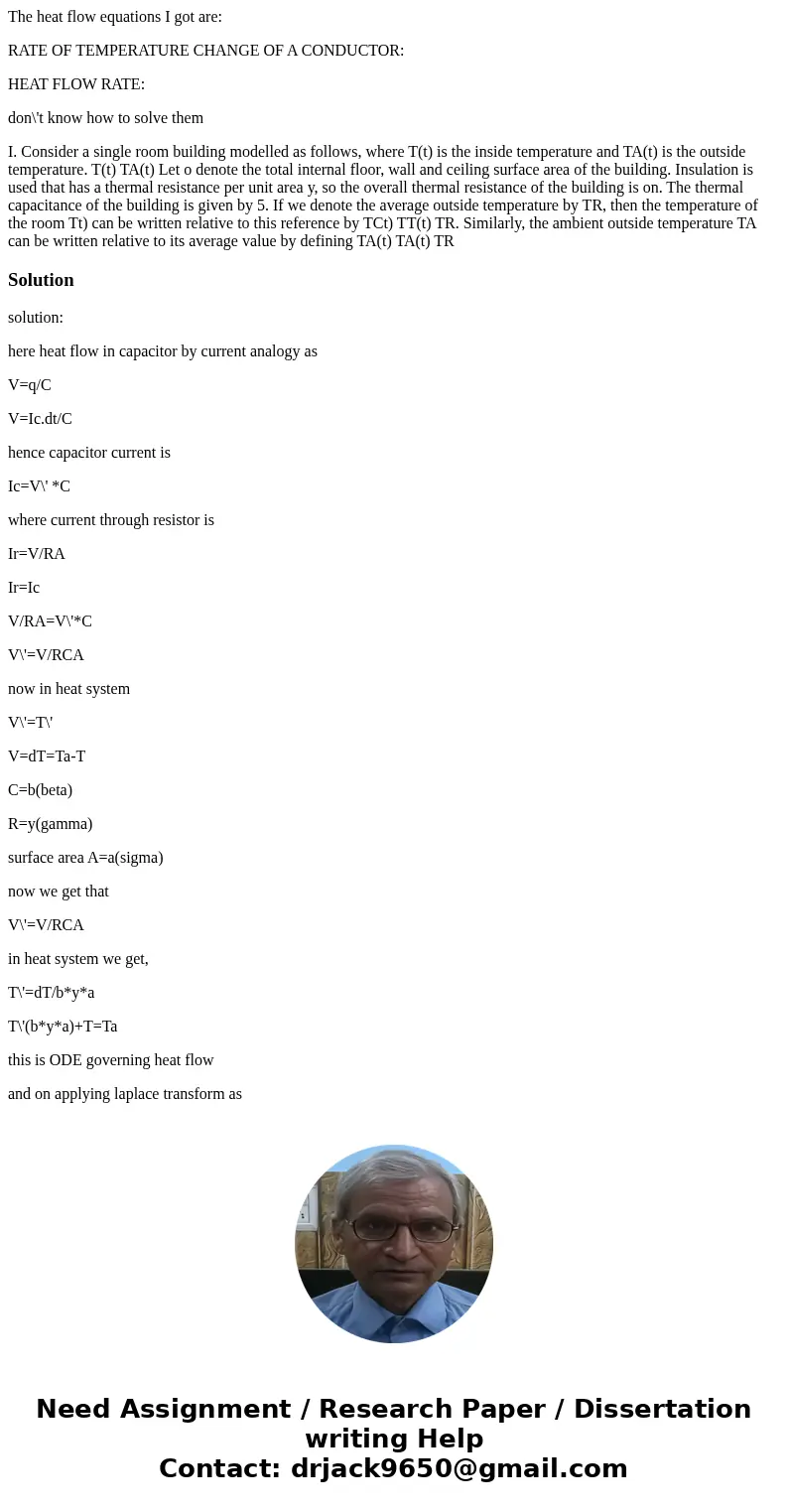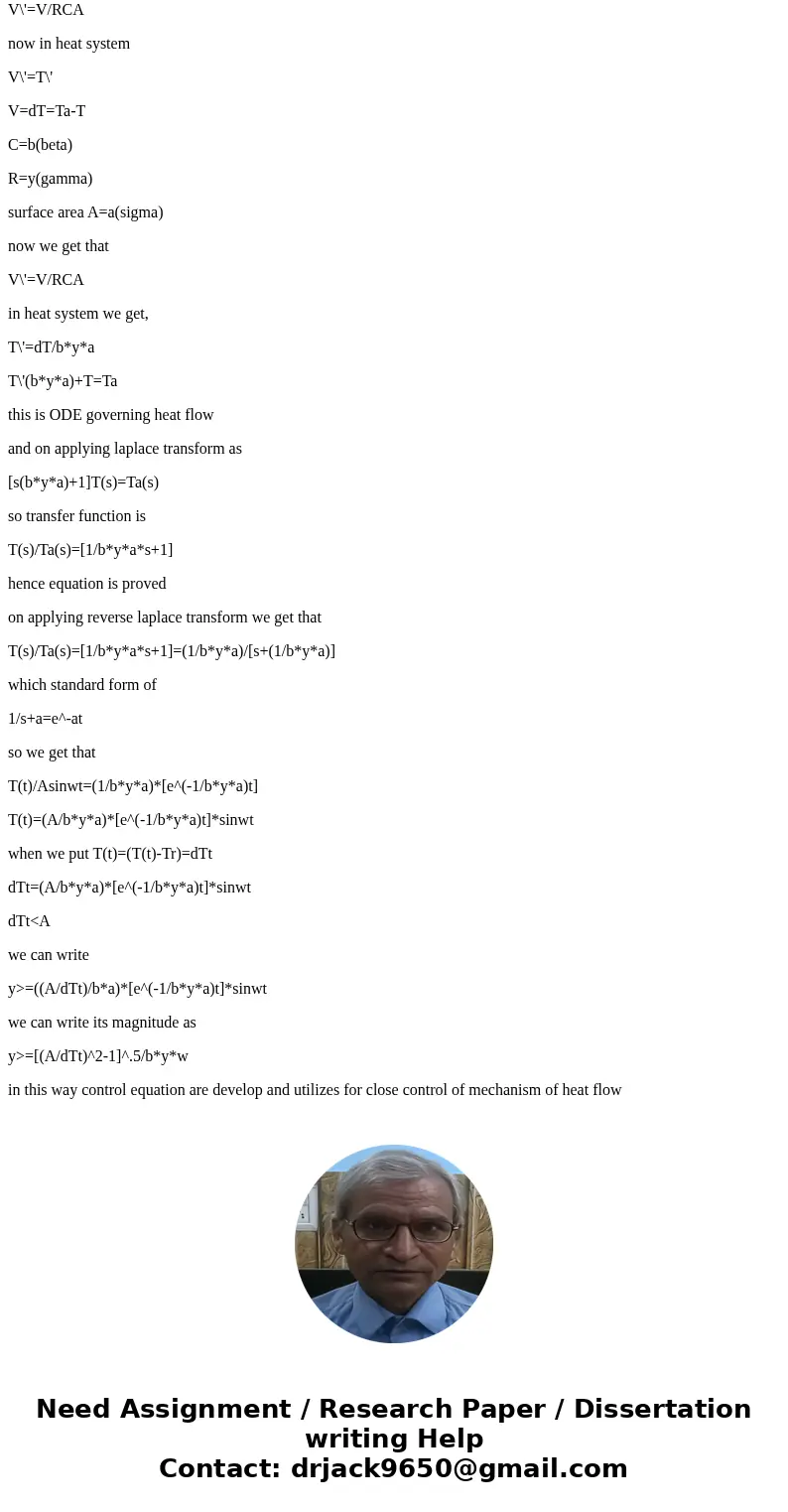The heat flow equations I got are RATE OF TEMPERATURE CHANGE
The heat flow equations I got are:
RATE OF TEMPERATURE CHANGE OF A CONDUCTOR:
HEAT FLOW RATE:
don\'t know how to solve them
I. Consider a single room building modelled as follows, where T(t) is the inside temperature and TA(t) is the outside temperature. T(t) TA(t) Let o denote the total internal floor, wall and ceiling surface area of the building. Insulation is used that has a thermal resistance per unit area y, so the overall thermal resistance of the building is on. The thermal capacitance of the building is given by 5. If we denote the average outside temperature by TR, then the temperature of the room Tt) can be written relative to this reference by TCt) TT(t) TR. Similarly, the ambient outside temperature TA can be written relative to its average value by defining TA(t) TA(t) TRSolution
solution:
here heat flow in capacitor by current analogy as
V=q/C
V=Ic.dt/C
hence capacitor current is
Ic=V\' *C
where current through resistor is
Ir=V/RA
Ir=Ic
V/RA=V\'*C
V\'=V/RCA
now in heat system
V\'=T\'
V=dT=Ta-T
C=b(beta)
R=y(gamma)
surface area A=a(sigma)
now we get that
V\'=V/RCA
in heat system we get,
T\'=dT/b*y*a
T\'(b*y*a)+T=Ta
this is ODE governing heat flow
and on applying laplace transform as
[s(b*y*a)+1]T(s)=Ta(s)
so transfer function is
T(s)/Ta(s)=[1/b*y*a*s+1]
hence equation is proved
on applying reverse laplace transform we get that
T(s)/Ta(s)=[1/b*y*a*s+1]=(1/b*y*a)/[s+(1/b*y*a)]
which standard form of
1/s+a=e^-at
so we get that
T(t)/Asinwt=(1/b*y*a)*[e^(-1/b*y*a)t]
T(t)=(A/b*y*a)*[e^(-1/b*y*a)t]*sinwt
when we put T(t)=(T(t)-Tr)=dTt
dTt=(A/b*y*a)*[e^(-1/b*y*a)t]*sinwt
dTt<A
we can write
y>=((A/dTt)/b*a)*[e^(-1/b*y*a)t]*sinwt
we can write its magnitude as
y>=[(A/dTt)^2-1]^.5/b*y*w
in this way control equation are develop and utilizes for close control of mechanism of heat flow


 Homework Sourse
Homework Sourse